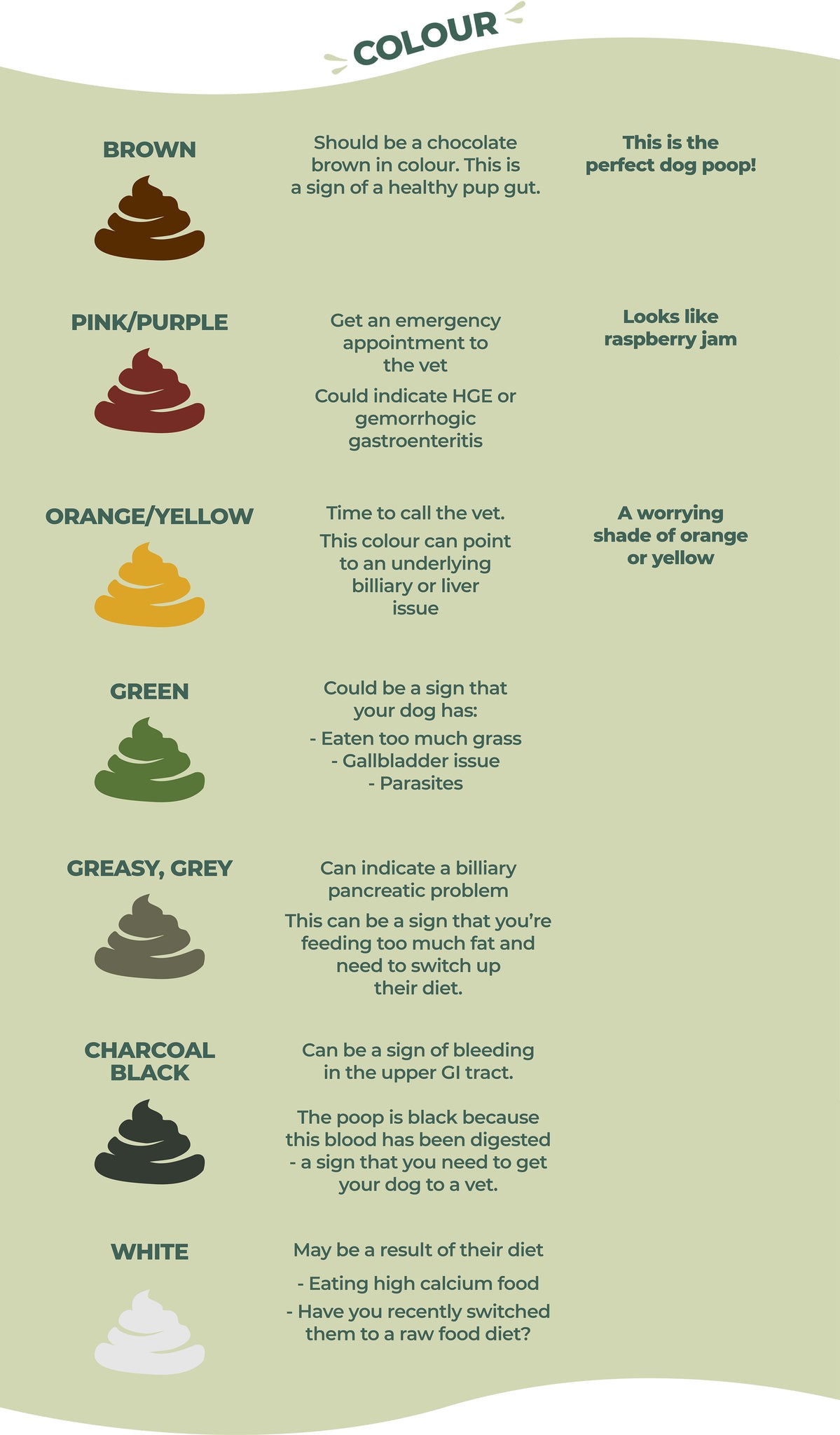Every dog poops, there is nothing new or exciting about that, but have you ever stopped to examine your dog’s stool before scooping it up? There are many factors that can indicate that your dog isn’t in the best of health.
A healthy dog poo should be chocolate brown in colour and cigar-like in shape which holds its form when moved. The texture should be like a soft putty.
Anything other than this, you need to keep an eye on and, if any abnormalities in your dog’s poo continue for more than a couple of days, be sure to consult your vet.
Next time you are out with your dog, examine their poo in a little more detail and see if there is anything that you need to be aware of. We have put together the following as a guide.

Consistency
As mentioned above, dog poo should be easy to pick up. It should feel soft to touch, moist and compact with the ability to retain its shape when picked up.
Hard stools are an indication of constipation which can be due to dehydration or a lack of fibre in your dog’s diet.
Other causes include a lack of exercise, blocked or infected anal glands, objects caught in the intestinal tract such as gravel or bones or it can even be a side effect of medication. If your dog is constipated, try taking them for a walk. Exercise can help to ease symptoms. In addition, make sure that they have access to plenty of fresh water.
Dog diarrhoea is a sign of an intestinal upset which could be down to food intolerance such as a grain allergy or a nasty parasite. The most common cause is something upsetting the normal digestive function of the intestine. If this happens, try 24 hours fasting to help settle the tummy.

Colour
Chocolate brown – The colour of healthy poo! This is a sign that your dog’s tummy is doing exactly what it needs to do. Any other colour, something is amiss.
Pink/Purple/Red – If your dog’s poo is pink, purple or red in colour, get an emergency vet appointment straight away. This can be a sign of digested blood and could be because of intestinal bleeding or ulcerations.
Orange/Yellow – This could be due to a biliary or liver issue. Again, you need to call the vet for further investigation.
Green – Has your dog been eating too much grass? If not, their gallbladder could be to blame. Keep an eye and contact the vet for a proper diagnosis.
Grey/Greasy – Again, this colour stool needs vet consultation. Grey, greasy poo can be a sign of a biliary or pancreatic problem.
Charcoal black – Talk to your vet ASAP as black poo can also be a sign of bleeding in the intestinal tract.
White – White poo could be down to your dog’s diet. Have you recently switched them to raw food? Or are they getting enough calcium?

Content
White specks – This could point to the presence of worms. Make sure you follow a regular deworming schedule to avoid these pesky critters from appearing. If you are unsure, consult your vet.
Red streaks – This could be an indicator that blood is present and it needs to be investigated. It might be the sign of a slight tear or trauma around your dog’s bottom or in their rectum. Bright red blood in dog poo indicates fresh blood and sometimes this can be due to problems in the bowel. It's best to have any blood checked out by your vet.
Grass – Grass is one of the common foreign objects you can find in your dog’s poo. If your dog tends to eat stuff he shouldn’t, you might find all sorts. If you suspect there is something caught in the digest tract, speak to the vet immediately.
Fur – If your dog likes to overgroom, you could find fur in their poo. Anxiety can be the cause of this type of behaviour. Look for any stressors which can trigger overgrooming and introduce changes gradually to rectify the behaviour.

Coating
Finally, coating! There is a natural degree of coating when a dog poops as mucus is produced to help lubrication. If you notice mucus within the poo rather than just as a coating, this can be a sign of inflammation caused by nasties such as parasites, bacterial infections, or food intolerances.
Food intolerances are becoming increasingly common and a change in diet will be required. In serious cases, antibiotics and steroids might be needed. As with everything we have discussed today, consult your vet if you need guidance.




